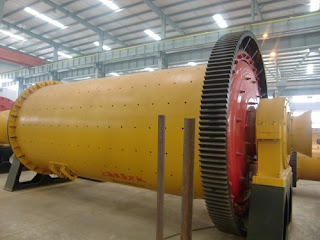 |
| Dry Grinding Mill |
A grinding mill is an industrial tool that reduces solid materials into a desired particle size and is vital in reducing solids, such as cement, into a more manageable and powdered form. It is also used to mix solids with liquids or change the gradient of animal feed and mills come in a variety of forms suited for different tasks and challenges.
Ball Mill
A ball mill uses centrifugal force and many metal balls to grind substances into a fine powder. It is a vital tool for regrinding work and is used mainly on materials such as cement, glass and chemical fertilizer. Its primary design is a large horizontal metal cylinder with two warehouses, or compartments, containing metal balls and scale-boarded, or grooved, edges. The cylinder is then rotated to create centrifugal force to lift the balls and drop them on the material, grinding them. The first warehouse is made to start the grinding process and when the material is made fine enough, it enters through specified holes into the second warehouse, which--with different specification balls and scale boards--grinds the material into a finer powder.
 |
| Rod Grinding Mill |
Like a ball mill, a rod mill is a large horizontal cylinder that uses centrifugal force to grind material. However, instead of balls, it uses long metal rods that are placed almost parallel to each other and the cylinder. The walls of the grinder are also scale-boarded, so when the rods tumble, they crush the material against them. A rod mill creates a relatively unified gradient, and is great for reducing very coarse material into a size manageable by ball mills.
Attrition (or Disc) Mill
This mill does not use a cylinder principle; instead, it uses a pair of discs held close and parallel to each other to create a grinding chamber out of the resulting gap. One disc is held stationary while the other spins at great speed to grind the material until it is fine enough to exit from the gap at the edges of the disc. Some attrition mills have both discs spin at counter rotations to quicken this process. A hole is made in the center of the disc to provide a feed for the material and the gap is made smaller towards the disc's edge, making the material finer and finer before it exits the chamber.

